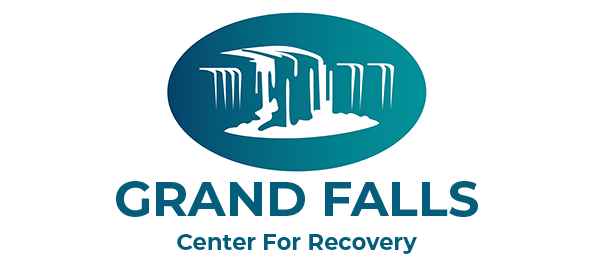Prescription drug abuse has continued to rise in the past decade, with The Centers for Disease Control and Prevention’s 2019 National Survey on Drug Use and Health reporting that 11 million Americans had misused prescription drugs within the previous year. Abuse of these medications can have serious medical consequences, including a higher risk of addiction or overdose.
Even those who obtain their prescriptions legally may find themselves slipping down an unexpected path toward illicit drug misuse—but how does this happen? In order to confront the issue of prescription drug abuse head-on, it is important to understand its insidious nature and learn about various prevention strategies available today.
We’ll discuss how addicts find themselves gravitating toward substance misuse, as well as tips on avoiding the slippery slope from doctor’s orders to dependence.
Overview of Prescription Drug Abuse and Its Causes
Prescription drug abuse is a serious problem that affects many individuals and communities across the country. It is defined as the use of prescription medication in excess of prescribed amounts or for non-medical purposes. The problem has grown significantly in recent years, fueled by a variety of complex factors.
One major cause of prescription drug abuse is easy access to these drugs, both legally and illegally. It is also driven by a lack of awareness and education about the potential dangers of these drugs. In addition, many individuals turn to prescription drugs to self-medicate for mental health issues or other medical problems. Addressing the issue of prescription drug abuse requires a comprehensive approach, including education, prevention, and treatment programs.
How Prescription Drug Abuse Can Turn Into Addiction
Prescription drug abuse can lead to addiction if it is not appropriately managed. A person can start abusing prescription drugs by using them in ways other than prescribed by the physician, misusing someone else’s prescription drugs, or taking these drugs to get high.
Over time, the brain adapts and becomes reliant on the drug, eventually needing larger doses to achieve the same effects, leading to addiction. Addiction can lead to devastating consequences, affecting not only the individual but also their family and community.
It is essential to seek help and support for those struggling with addiction and work towards prevention initiatives to reduce the prevalence of prescription drug abuse. As a society, we can play our part in addressing this issue and combatting it together.
Common prescription drugs that are abused and their symptoms
Prescription drugs are an essential part of treating various ailments. However, some people misuse these medicines for non-medical purposes, leading to harmful consequences. Among the most commonly abused prescription drugs are:
Opioids
Opioids are a type of prescription drug that is typically used to treat pain. They work by binding to opioid receptors in the brain and spinal cord, which reduces the perception of pain. Opioids can be highly addictive, and people who abuse them may experience a number of side effects, including drowsiness, constipation, nausea, and vomiting.

Stimulants
Stimulants are a type of prescription drug that are typically used to treat conditions like ADHD and narcolepsy. They work by increasing levels of dopamine and norepinephrine in the brain, which leads to improved focus and alertness. Stimulants can be highly addictive, and people who abuse them may experience a number of side effects, including anxiety, paranoia, and insomnia.
Sedatives
Sedatives are a type of prescription drug that is typically used to treat anxiety or insomnia. They work by depressing the central nervous system, which leads to relaxation and sleepiness. Sedatives can be highly addictive, and people who abuse them may experience a number of side effects, including drowsiness, confusion, and impaired coordination.
Antidepressants
Antidepressants are a type of prescription drug that is typically used to treat depression. They work by increasing levels of serotonin in the brain, which leads to improved mood and decreased anxiety. Antidepressants can be addictive, and people who abuse them may experience a number of side effects, including weight gain, sexual dysfunction, and headaches.
Antipsychotics
Antipsychotics are a type of prescription drug that is typically used to treat psychosis. They work by blocking dopamine receptors in the brain, which leads to improved symptoms such as hallucinations and delusions. Antipsychotics can be addictive, and people who abuse them may experience a number of side effects, including drowsiness, weight gain, and blurred vision
The symptoms of prescription drug abuse vary depending on the type of medication taken and the individual’s dosage. It’s crucial to understand the risks associated with misusing prescription drugs and seek professional help if you or someone you know is struggling with a prescription drug addiction.
Warning Signs of Prescription Drug Abuse
Prescription drug abuse is a concerning problem that affects individuals of all backgrounds and ages. The warning signs of such abuse are not always evident, making it difficult to recognize when a loved one or acquaintance needs assistance.
It’s important to pay close attention to certain indicators, such as:

Taking more of the medication than prescribed
One of the warning signs of prescription drug abuse is taking more of the medication than prescribed. This can be done by taking larger doses than recommended, taking the medication more often than prescribed, or taking the medication for a longer period of time than prescribed. Taking more of the medication than prescribed can lead to serious side effects and can even be fatal.
Taking the medication for reasons other than prescribed
Another warning sign of prescription drug abuse is taking the medication for reasons other than prescribed. This includes taking medication to get high, to cope with stress or anxiety, or to improve one’s performance at work or school. Taking prescription drugs for reasons other than prescribed can be extremely dangerous and can lead to addiction.
Experiencing withdrawal symptoms
Experiencing withdrawal symptoms is another warning sign of prescription drug abuse. Withdrawal symptoms can occur when someone stops taking a prescription drug after becoming dependent on it. Withdrawal symptoms can include nausea, vomiting, diarrhea, headaches, and tremors. If you experience any of these symptoms after stopping your medication, it’s important to seek medical help immediately as they can be life-threatening.
Neglecting responsibilities
Neglecting responsibilities is another warning sign that someone may be abusing prescription drugs. If you find that you’re neglecting your work, school, or family obligations in favor of using drugs, it’s a sign that your use has become problematic. Neglecting responsibilities can have serious consequences and can lead to job loss, financial problems, and relationship issues.
Engaging in risky behaviors
Engaging in risky behaviors is another warning sign of prescription drug abuse. Risky behaviors include driving while under the influence of drugs, having unprotected sex, and sharing needles when injecting drugs. These behaviors put yourself and others at risk of serious harm and should be avoided if you’re abusing prescription drugs
As a professional in the healthcare industry, it’s crucial to educate individuals on the warning signs of prescription drug abuse in order to mitigate the harmful consequences that come as a result of this type of addiction.
How to Identify Risk Factors for Prescription Drug Abuse
Prescription drug abuse is a growing concern in today’s society, and identifying risk factors is crucial in preventing it. Some risk factors for prescription drug abuse include:
Age
Age is a risk factor for prescription drug abuse. The National Institute on Drug Abuse (NIDA) reports that people aged 18-25 are more likely to abuse prescription drugs than any other age group. This is likely due to the fact that young adults are more likely to have access to prescriptions and are also more likely to experiment with drugs.
Gender
Gender is also a risk factor for prescription drug abuse. NIDA reports that men are more likely to abuse prescription drugs than women. This is likely due to the fact that men are more likely to have access to prescriptions and are also more likely to engage in risky behaviors.
Race/Ethnicity
Race and ethnicity are also risk factors for prescription drug abuse. NIDA reports that Native Americans and Alaska Natives have the highest rates of prescription drug abuse, followed by Caucasians, Hispanics, and African Americans. This is likely due to a combination of factors, including access to prescriptions, cultural norms, and socioeconomic status.
Mental Health Disorders
Mental health disorders are also a risk factor for prescription drug abuse. People with mental health disorders are more likely to be prescribed drugs that can be abused, such as opioids, and they may also be more likely to self-medicate with drugs in order to cope with their symptoms.
History of Substance Abuse
A history of substance abuse is also a risk factor for prescription drug abuse. People who have abused other substances in the past are more likely to abuse prescription drugs as well, as they may be more likely to have access to them and may be more tolerant of their effects.
Stressful Life Events
Stressful life events, such as the death of a loved one or the loss of a job, can also be a risk factor for prescription drug abuse. People who are going through difficult times may be more likely to turn to drugs in order to cope with their emotions
The misuse of prescription drugs can lead to serious consequences and impact not only the individual but also their loved ones. By identifying these risk factors, we can take steps toward prevention and help those in need. As healthcare professionals, it is our responsibility to remain vigilant and informed about the risks of prescription drug abuse to provide the best care possible.
Common treatment options for prescription drug abuse
Prescription drug abuse has become a widespread problem, affecting people of all ages and backgrounds. Fortunately, there are numerous treatment options available to those who are struggling with addiction to prescription drugs. Some of the most common treatment options include medication-assisted therapy, counseling and therapy, support groups, and inpatient or outpatient rehabilitation programs.
These treatment options often involve a combination of techniques designed to address the physical, psychological, and emotional aspects of addiction. While the road to recovery can be challenging, seeking help is the first step towards overcoming prescription drug abuse and living a healthy, fulfilling life.
What to Do When You Suspect Someone Has a Problem With Prescription Drugs
It’s crucial to express your concerns without judgment or blame and encourage the individual to seek help. If they’re willing to receive assistance, support them in finding a healthcare provider or treatment center that can address their underlying issues and provide the necessary support. Remember, prescription drug abuse is a serious issue, and seeking help is the first step toward recovery.

